Capturing the essence of spring through cinematic photography while documenting your sketching journey is a breathtaking way to blend artistry and storytelling. Imagine sun-dappled pages, fluttering petals caught mid-air, and the soft blur of an open sketchbook against a field of wildflowers—all elements that transform a simple creative moment into a cinematic masterpiece.
In this guide, we’ll explore how to achieve cinematic, dreamy photography while sketching outdoors, including the best camera settings, composition techniques, natural lighting tricks, and must-have products to elevate your spring sketching aesthetic.
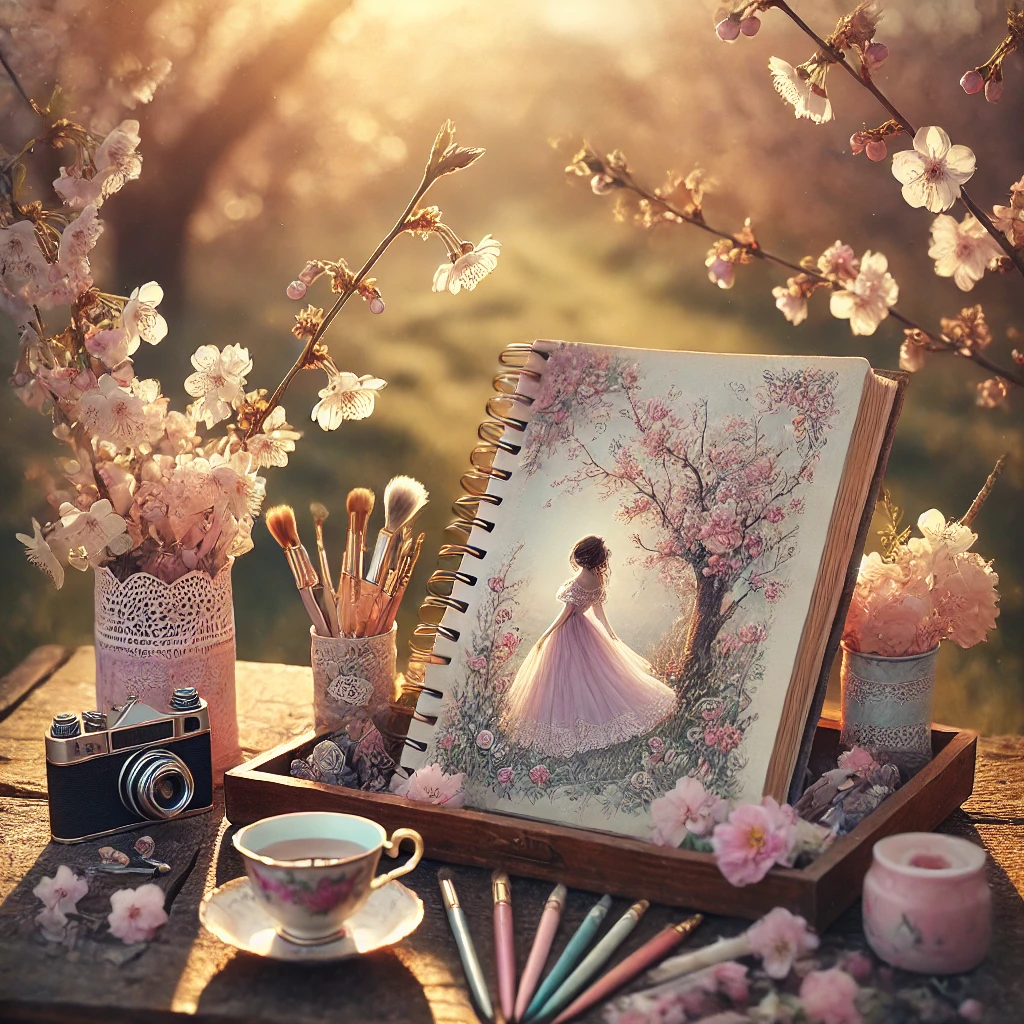
(This blog contains affiliate links, meaning I make a small commission at no extra cost to you.)
1. Choosing the Perfect Location for Cinematic Aesthetics
A compelling visual narrative starts with a setting that feels immersive and poetic. Spring offers vibrant, blooming landscapes that create stunning natural backdrops.
Ideal Locations for a Cinematic Sketching Photoshoot:
- Botanical Gardens – Vibrant blossoms, elegant pathways, and dreamy greenhouse light.
- Cherry Blossom Parks – Soft pink petals create an ethereal, romantic ambiance.
- Riverside or Lakeside Settings – The shimmering water adds cinematic reflections.
- Open Meadows – Rolling hills with scattered flowers evoke a serene atmosphere.
- Cobblestone Streets & Cafés – Old-world charm with artistic nostalgia.
Best Product Recommendation:
- Portable Wooden Sketching Easel – A foldable, lightweight easel that’s perfect for on-the-go sketching and aesthetically beautiful in photos.
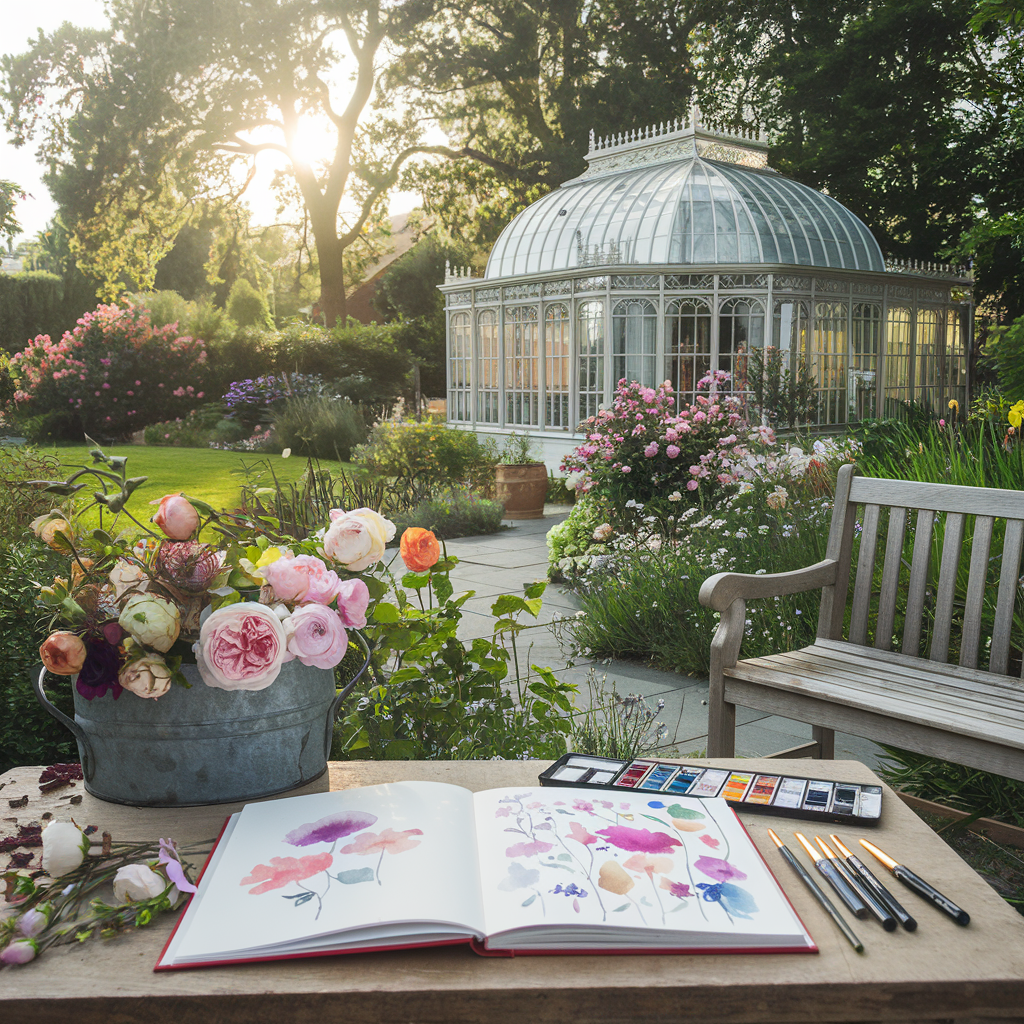

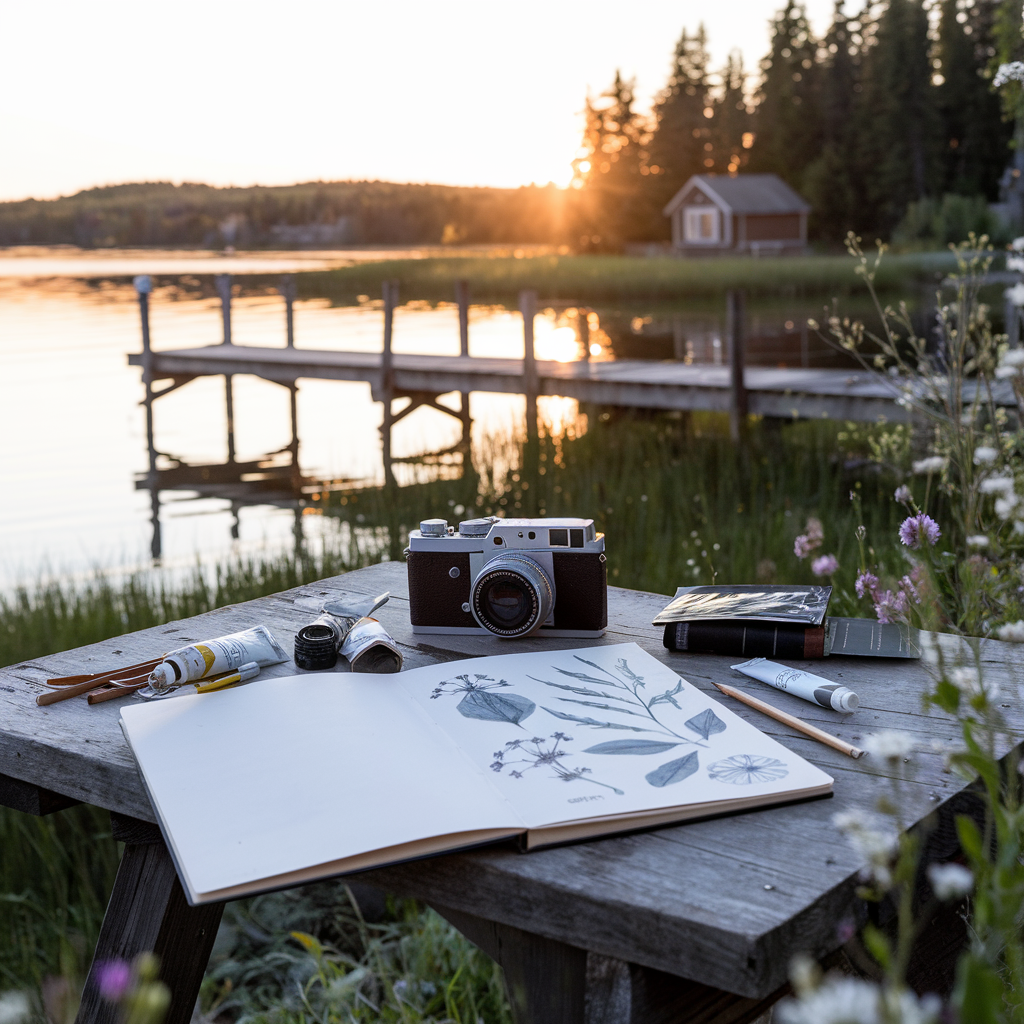
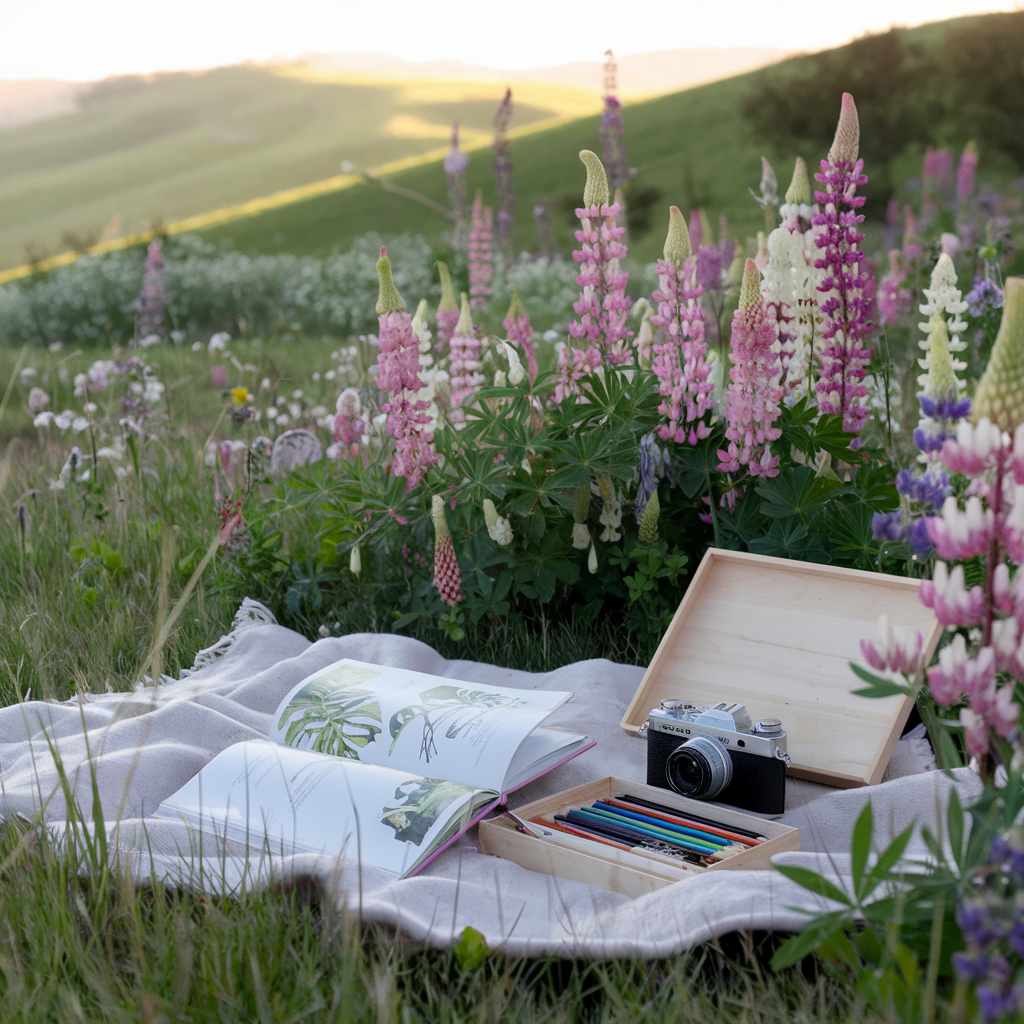
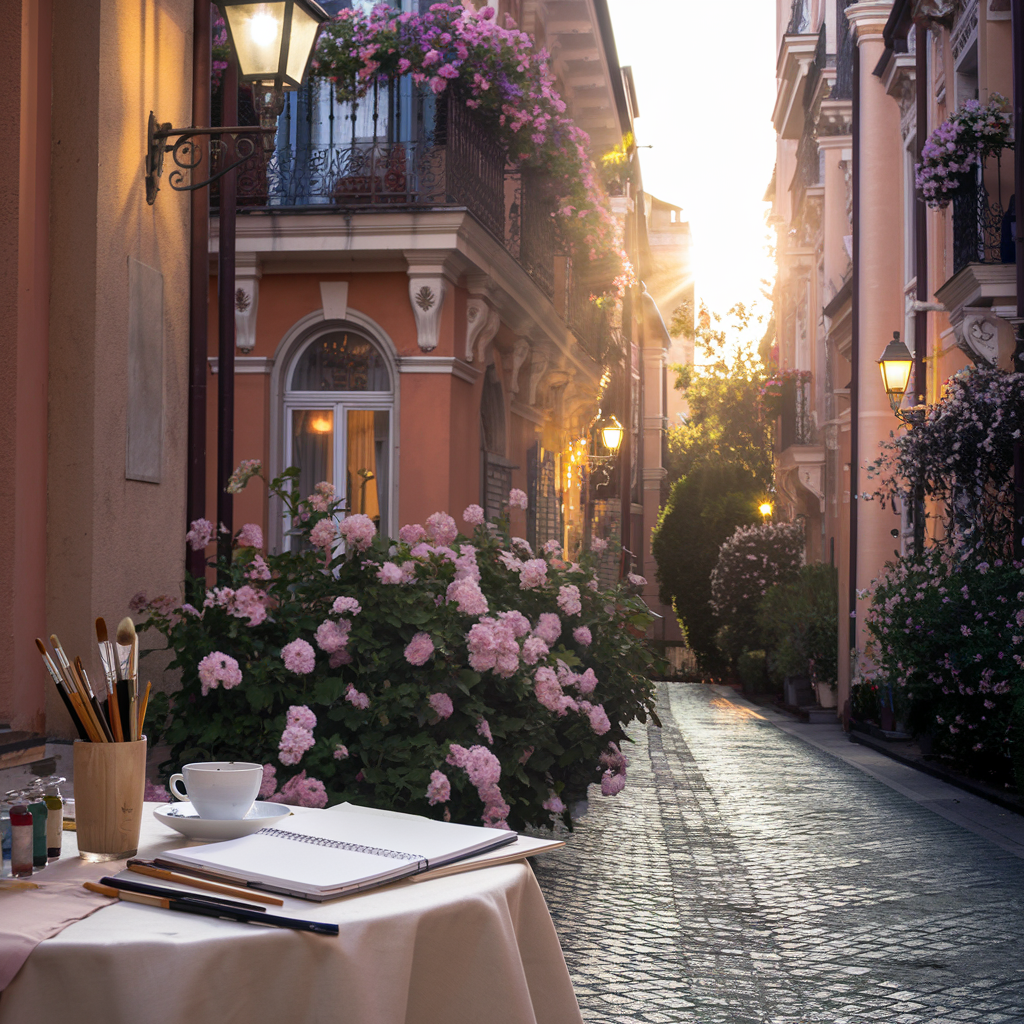
2. The Best Camera & Settings for a Cinematic Look
Achieving a cinematic quality in your photos requires the right camera settings to emphasize depth, light, and movement.
Recommended Camera Settings:
- Use a Wide Aperture (f/1.8 – f/2.8) – Creates a dreamy, blurred background.
- Shoot in Golden Hour (Soft Morning/Evening Light) – Natural warm tones add depth.
- Adjust Your Shutter Speed (1/200 – 1/500s) – Captures subtle movements like petals falling or pages turning.
- Shoot in RAW Format – Gives more flexibility in post-processing.
- Use Manual Focus – Ensures intentional blurring and crisp details.
Best Product Recommendation:
- Fujifilm X-T5 Mirrorless Camera – A lightweight camera with a cinematic color profile that enhances warm tones and depth.
- 50mm f/1.8 Prime Lens – Ideal for capturing soft-focus, cinematic bokeh.
3. Composition Techniques for Cinematic Storytelling
Composition plays a vital role in creating an immersive, cinematic effect that feels straight out of a film.
Key Composition Techniques:
- Foreground Framing – Use flowers, leaves, or fabric edges to frame the subject.
- The Rule of Thirds – Position your sketchbook or hands slightly off-center for a dynamic shot.
- Depth & Layering – Capture multiple elements (sketchbook, flowers, hands) in different focus planes.
- Intentional Motion Blur – Capture movement like wind through pages or light dappling over a sketch.
- Backlighting for Glow – Shoot against the sunlight to get a halo-like effect around your subject.
Best Product Recommendation:
- Handmade Leather Sketchbook – Photographs beautifully and adds a vintage, cinematic feel.
- Artisan Watercolor Set – Aesthetic watercolor palettes that create visually engaging compositions.

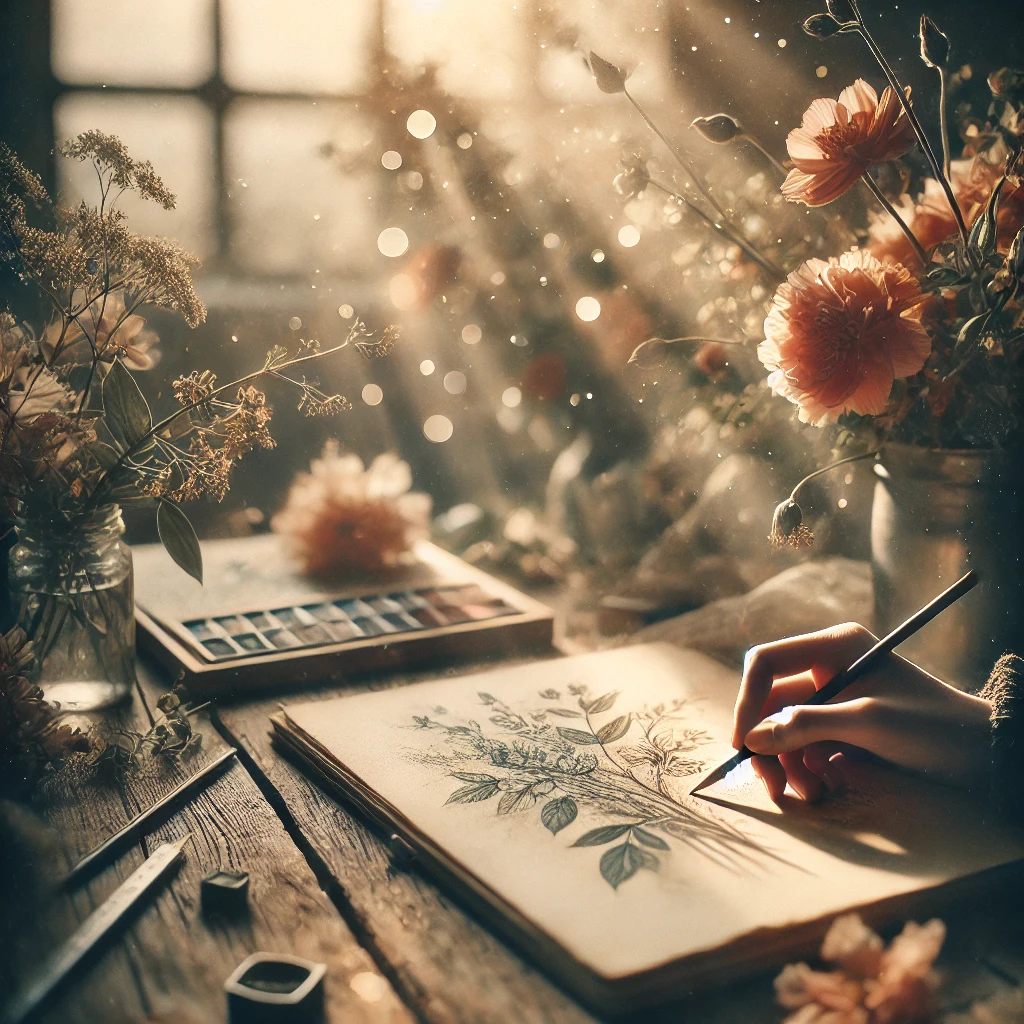

4. Styling Your Sketching Setup for Visual Impact
Aesthetically styling your setup enhances the storytelling aspect of your photos.
Essential Styling Elements:
- Vintage or Textured Sketchbooks – Leather-bound, hand-sewn, or deckled-edge paper sketchbooks add a timeless look.
- Soft Linen Throws or Picnic Blankets – Creates a cozy, effortless artistic atmosphere.
- Fresh Flowers & Natural Elements – Scattered blossoms, pressed flowers, or twigs add organic beauty.
- Delicate Ceramic or Wooden Art Tools – Enhance the old-world charm of your photos.
Best Product Recommendation:
- French Linen Art Wrap – A gorgeous, foldable wrap to store your sketching tools in style.
- Pressed Flower Journal – Aesthetic, Instagram-worthy prop that complements the cinematic mood.
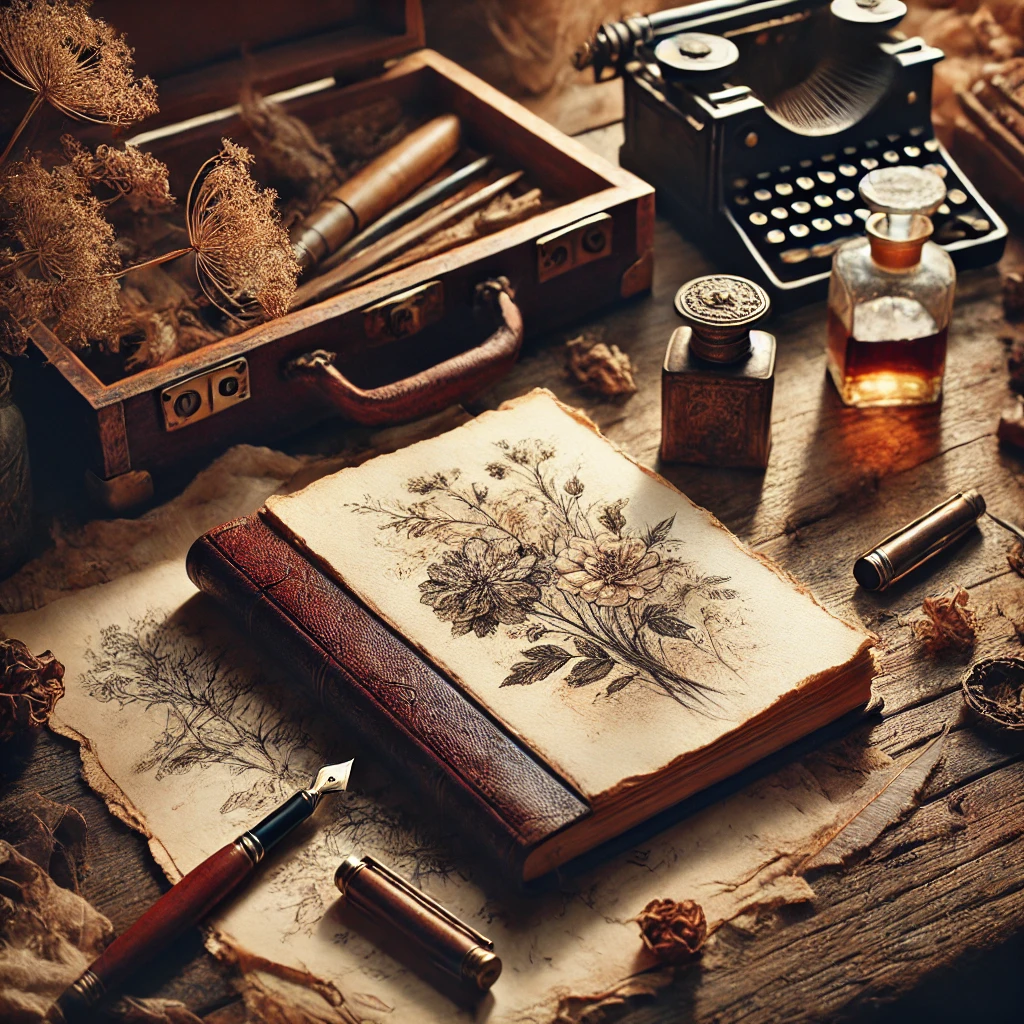
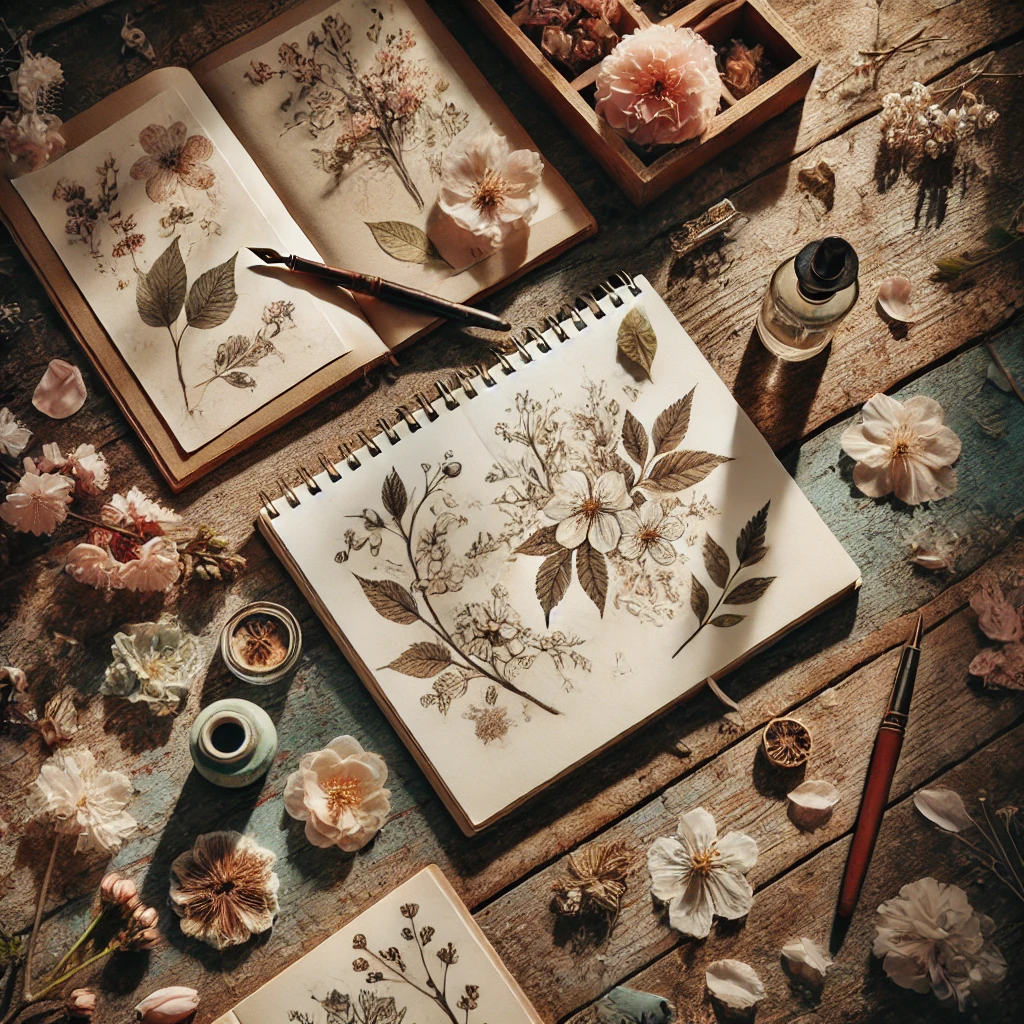

5. Capturing Hands & Candid Artistic Movements
One of the most effective ways to make your photos feel alive and cinematic is to capture movement and natural gestures.
Ways to Capture Artistic Motion:
- Sketching in Real-Time – Photograph the moment when your pencil touches the page.
- Hands Grazing the Paper or Brushes Dipped in Water – Close-up shots create intimacy.
- Petals or Leaves Falling Over the Sketchbook – A sense of fleeting beauty.
- Wind-Blown Pages or Ribbon Bookmarks in Motion – Adds cinematic dynamism.
Best Product Recommendation:
- Handcrafted Calligraphy Pen Set – Adds a nostalgic, classic look to hand shots.
- Vintage Brass Page Holder – Keeps sketchbooks open while adding an old-world charm.
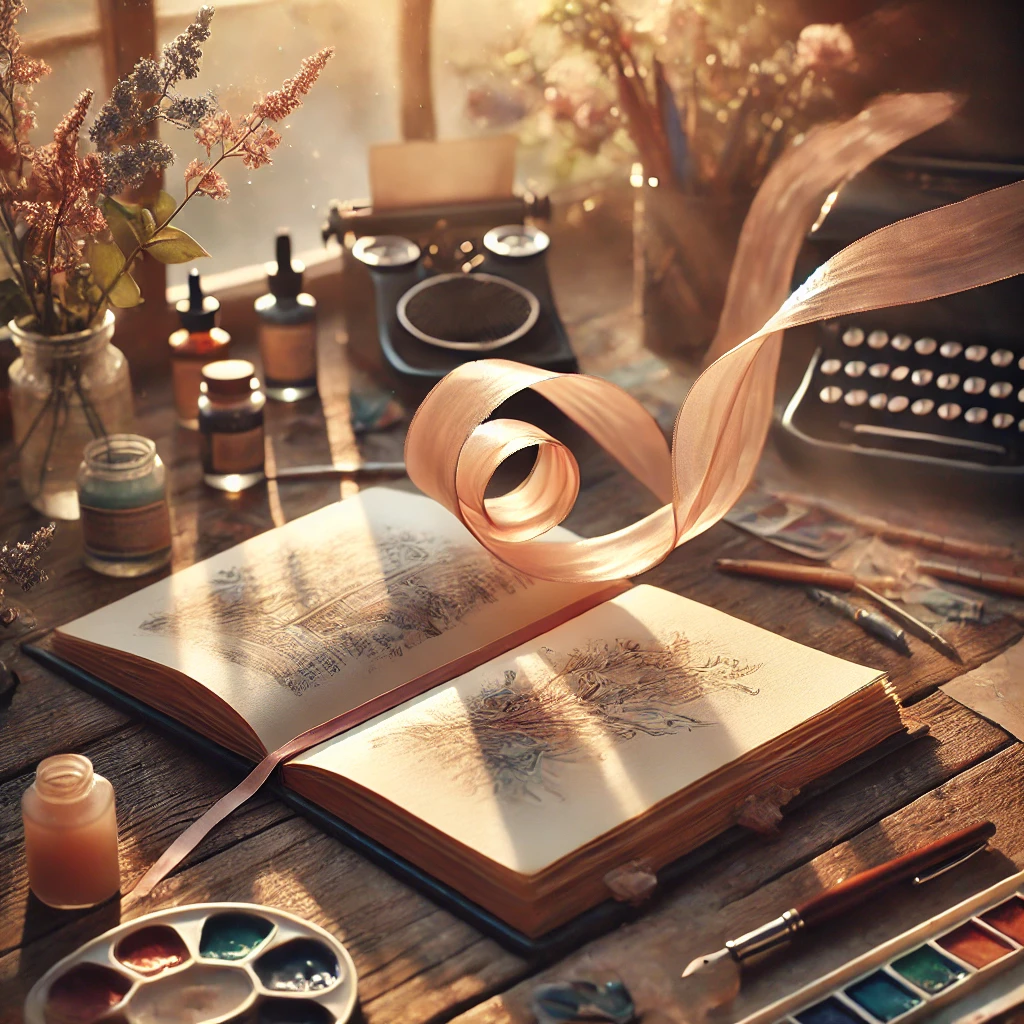
6. Editing Your Photos for a Cinematic Finish
Post-processing is key to achieving the soft, cinematic glow seen in professional storytelling photography.
Best Editing Techniques:
- Warm Film-Like Tones – Adjust color temperature to enhance soft golds and creams.
- Lower Contrast, Slight Fade – Creates a dreamy, nostalgic film look.
- Add Grain & Slight Vignette – Mimics the texture of old photography.
- Selective Focus & Soft Blur – Enhances depth and storytelling.
Best Product Recommendation:
- Lightroom Cinematic Preset Pack – A collection of film-inspired presets designed for artistic and storytelling photography.
Final Thoughts: Crafting Your Cinematic Spring Sketching Story
Bringing a cinematic touch to your sketching journey allows you to capture the poetic essence of spring in a way that is both personal and artistically inspiring. By combining thoughtful composition, styling, and editing, you can create imagery that tells a compelling, timeless story.
So pack your sketchbook, find the perfect spot, and start capturing the beauty of your spring art adventures—one cinematic frame at a time.
Have you tried cinematic photography for your sketching journey? Share your favorite tips and setups in the comments ! 🌸🎭
📌 Pin this guide on Pinterest for future inspiration!
Leave a Reply